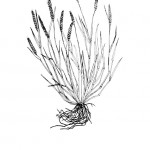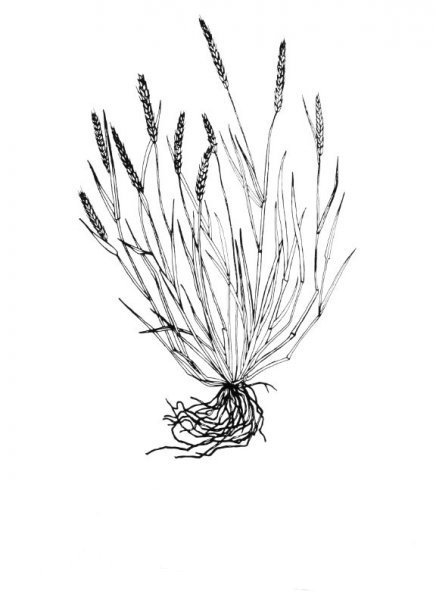Little Barley
Hordeum pusillum Nutt.
Poaceae
Description
Little Barley has unbranched, erect stems that grow from small tufts and measure 4 to 24 inches or 10 to 60 cm tall. Leaf blades are quite flat, wide-lanceolate, pubescent, and grow erect until near maturity. There are no auricles at the junction of the leaf blade and the sheath as seen in other species of Hordeum. The inflorescence is a dense, bristly spike measuring ¾ to 2 inches long that is greenish brown to yellowish and has three spikelets at each node. Bloom time occurs from April to May, with seeds ripening from May to June. Little Barley is an annual, cool-season, native ranging from 5 to 15 inches or 12 to 38 cm tall. It provides poor grazing for both livestock and wildlife. The florets are consumed by wild turkeys.Habitat
Little Barley can be found throughout the United States and in southern Canadian provinces. This plant rapidly increases on rangelands when grasses are heavily grazed. The abundance of this grass is directly related to close grazing, bare ground, and available moisture during the fall and early winter. Native habitats include roadsides, fields, grasslands, and disturbed sites. It is often associated with alkaline soils.Images
Plant Characteristics
Seed Type: Non-Encapsulated
Duration: Annual
Stem Texture: Hairless/Smooth
Growth Habit: Bunch grass, Grasses
Leaf Shape
 : Simple with Pinnate or Parallel Venation
: Simple with Pinnate or Parallel Venation
Season: Cool
Distribution
 : 01 - Pineywoods, 02 - Gulf Prairies and Marshes, 03 - Post Oak Savannah, 04 - Blackland Prairies, 05 - Cross Timbers and Prairies, 06 - South Texas Plains, 07 - Edwards Plateau, 08 - Rolling Plains, 09 - High Plains, 10 - Trans-Pecos
: 01 - Pineywoods, 02 - Gulf Prairies and Marshes, 03 - Post Oak Savannah, 04 - Blackland Prairies, 05 - Cross Timbers and Prairies, 06 - South Texas Plains, 07 - Edwards Plateau, 08 - Rolling Plains, 09 - High Plains, 10 - Trans-Pecos
Distributions
Distribution refers to the ecological region in Texas that a plant has been found. You can also view a clickable map.
Book: Know Your Grasses (B-182)
Collection: Grasses


